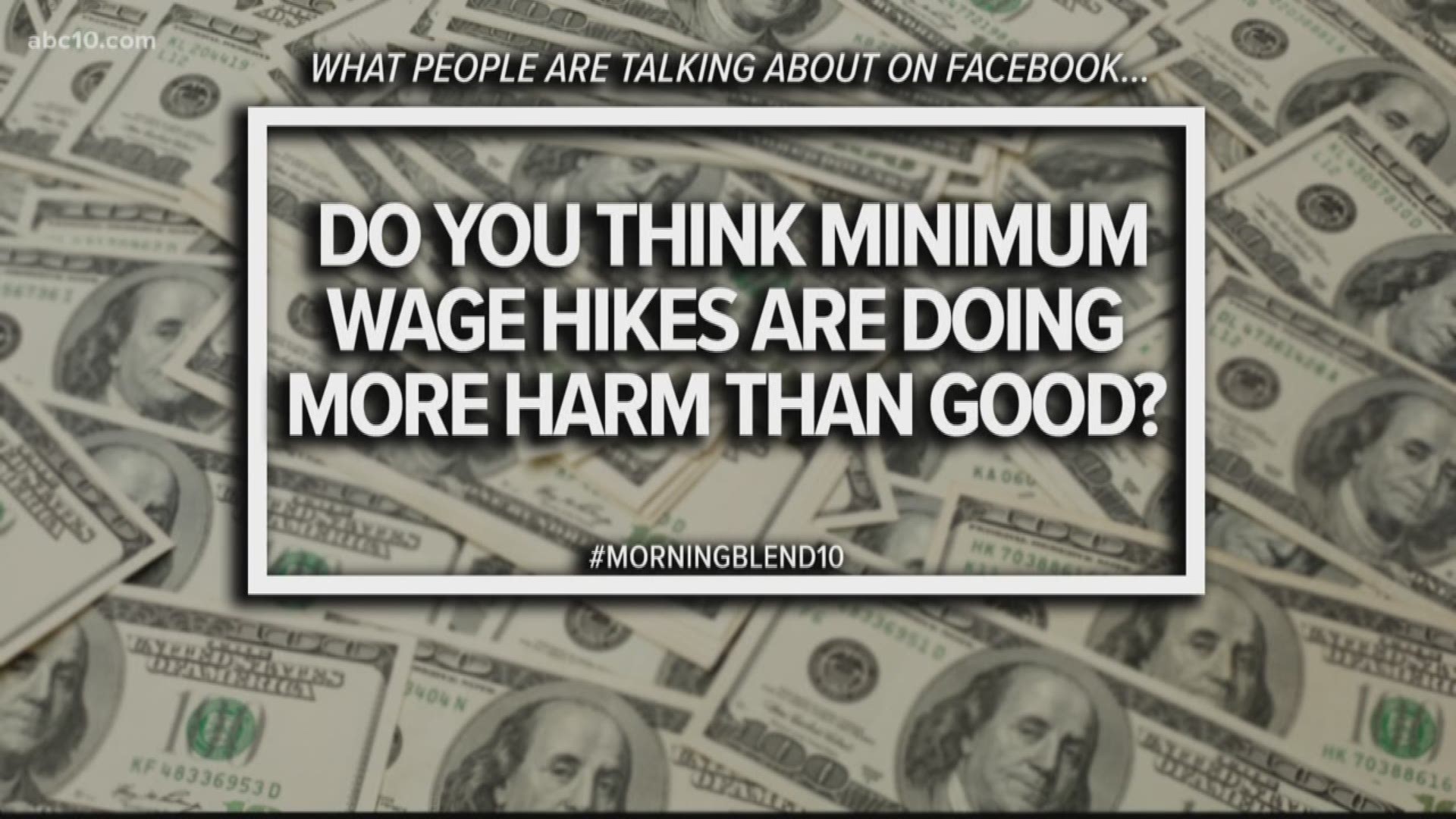CALIFORNIA, USA — With minimum wage jumping by a whole dollar in 2020, a number of Sacramento eateries have decided they can no longer take the heat and are closing up shop.
Sacramento mainstays like Opa Opa! and Fat City Bar and Café both closed their doors in 2019, citing pressure from the minimum wage increase.
“A dollar a year every January is a lot of pressure for a lot of small businesses like myself, including, but not limited to, the restaurant industry,” Phil Courey, owner of Opa Opa! told ABC10 in November. “Any service that employs minimum wage is suffering, I can tell you that.”
Business owners aren’t just looking at a $1 increase in January. They’re looking at a nearly 50% increase in wages over five years heading into 2022, and most of those businesses are in the restaurant industry, an area already burdened with staffing costs, dominating budgets, and notoriously thin profit margins.
“When you put those two things together, it leaves local businesses with no wiggle room,” the California Restaurant Association [CRA] said in an email statement to ABC10. “It should come as no surprise then, that many small businesses in Sacramento and in other communities are closing.”
The industry also has a high share of workers at or near the minimum wage level, and the addition of thin profit margins and fierce competition translates to why a lot of the impacts are seen in that area, says Jeff Michael, director for University of Pacific's Center for Business and Policy Research.
“It’s a challenge for them," Michael added. "It really effects the way they do business, and their customers are price sensitive.”
The CRA says some restaurants that choose to stay open have let workers go, reduced worker hours, added surcharges, or even raised their prices. Part of the reason behind that is because, when the minimum wage goes up, it’s not just an extra $1 an hour. That increase is shared with a variety of taxes and benefits, like social security taxes and worker’s compensation.
“I imagine that those are increasing as well,” Michael said. “Those have been on an increasing trend regardless of the minimum wage increase, so that could further contribute to worker’s comp. costs.”
In the end, it either means business have to raise costs, close down, or change the way they do business.
Some common changes the industry has seen so far are implementing counter service or food runners instead of a full wait staff and technology for placing orders and taking payments.
“Some older businesses that maybe had a way of operating or were set up in a different wage environment might find this more challenging than a new restaurant that plans for this from the beginning...” Michael said.
However, not every impact is necessarily bad from the minimum wage increase. Employees that are kept will have more money to spend back into the economy.
The research on minimum wage is still ongoing, in part due to the dynamic changes happening in California. Michael says some of the research done in the past was for smaller or one-time changes, and that the change we're seeing in California “is a completely different kind of change.”
“We can’t completely say how all that balances out right now,” Michael said. “We’re all sort of studying it. It’s a big experiment in the economy and not every impact is going to positive and not every impact is going to be negative.”
WATCH ALSO:

